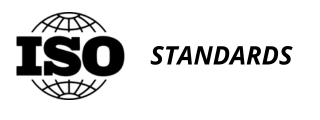Clause 8.2.3 of ISO 9001:2015 ushers organizations into a critical phase of quality management: the thorough review of all relevant requirements for products and services before any commitment to supply. This clause is integral to ensuring that an organization fully comprehends and can realistically meet the customer’s needs within the agreed timeframe. The process is complex, necessitating a detailed review that precedes the acceptance of any contract or order. This ensures that an organization does not overpromise and underdeliver, a situation that could significantly harm customer satisfaction and the organization’s reputation.
Understanding and Confirming Customer Requirements
At the heart of Clause 8.2.3 lies the organization’s responsibility to meticulously review the customer-stated requirements. This step is pivotal, confirming the organization’s understanding and capacity to meet these needs, including delivery and post-delivery specifications. However, understanding customer requirements is just the beginning. Organizations must also consider unstated but necessary requirements for the intended use or application of the product or service. These might include factors not immediately apparent to the customer but essential for functionality or regulatory compliance.
Organizational and Legal Requirements
Beyond customer expectations, organizations must integrate their own requirements into the review process. These could stem from the organization’s brand identity, aesthetic considerations, or proprietary standards. Additionally, the review process must account for statutory, regulatory, or legal requirements relevant to the product or service. These requirements can vary widely across industries and are crucial for ensuring compliance and avoiding legal pitfalls.
Addressing Contradictions and Confirming Agreements
A critical aspect of Clause 8.2.3 is resolving any conflicting requirements identified during the review process. These conflicts might arise from changes in specifications, delivery timelines, or other contractual commitments. It’s essential to address these discrepancies promptly to ensure clarity and mutual understanding between the organization and its customers. Furthermore, in instances where the customer does not provide a documented statement of requirements, ISO 9001:2015 mandates organizations to establish a process for confirming these requirements, potentially through simple measures like email confirmations.
Documentation and Adaptability
Maintaining documented information of the review process is not just a requirement of the ISO standard; it serves as a tangible record of the organization’s diligence in meeting customer needs and adapting to new or evolving requirements. Documenting this process can involve various methods, from signing off on contracts to using standardized review checklists. This documentation is vital for demonstrating compliance with ISO standards and for internal tracking and continuous improvement efforts.
When modifications to product or service requirements are identified, the organization must promptly update all related documentation and notify all relevant parties. This ensures that every team member is aligned with the updated requirements, fostering consistency in production, service delivery, and customer communication.
The Bigger Picture
Clause 8.2.3 emphasizes the importance of a holistic and proactive approach to understanding and fulfilling customer requirements. By instituting a systematic review process, organizations can ensure they are well-equipped to meet customer demands and legal obligations effectively. This clause not only safeguards against the risks of non-compliance and customer dissatisfaction but also champions the ethos of continuous improvement and quality excellence.
In summary, the rigorous application of Clause 8.2.3 enables organizations to navigate the complexities of customer and legal requirements with confidence and precision. This systematic review process is essential for validating an organization’s capability to deliver on its promises, ultimately enhancing customer satisfaction and bolstering the organization’s reputation for quality and reliability. Through meticulous planning, comprehensive review, and effective documentation, organizations can align their operations with the highest standards of quality management, as prescribed by ISO 9001:2015.




